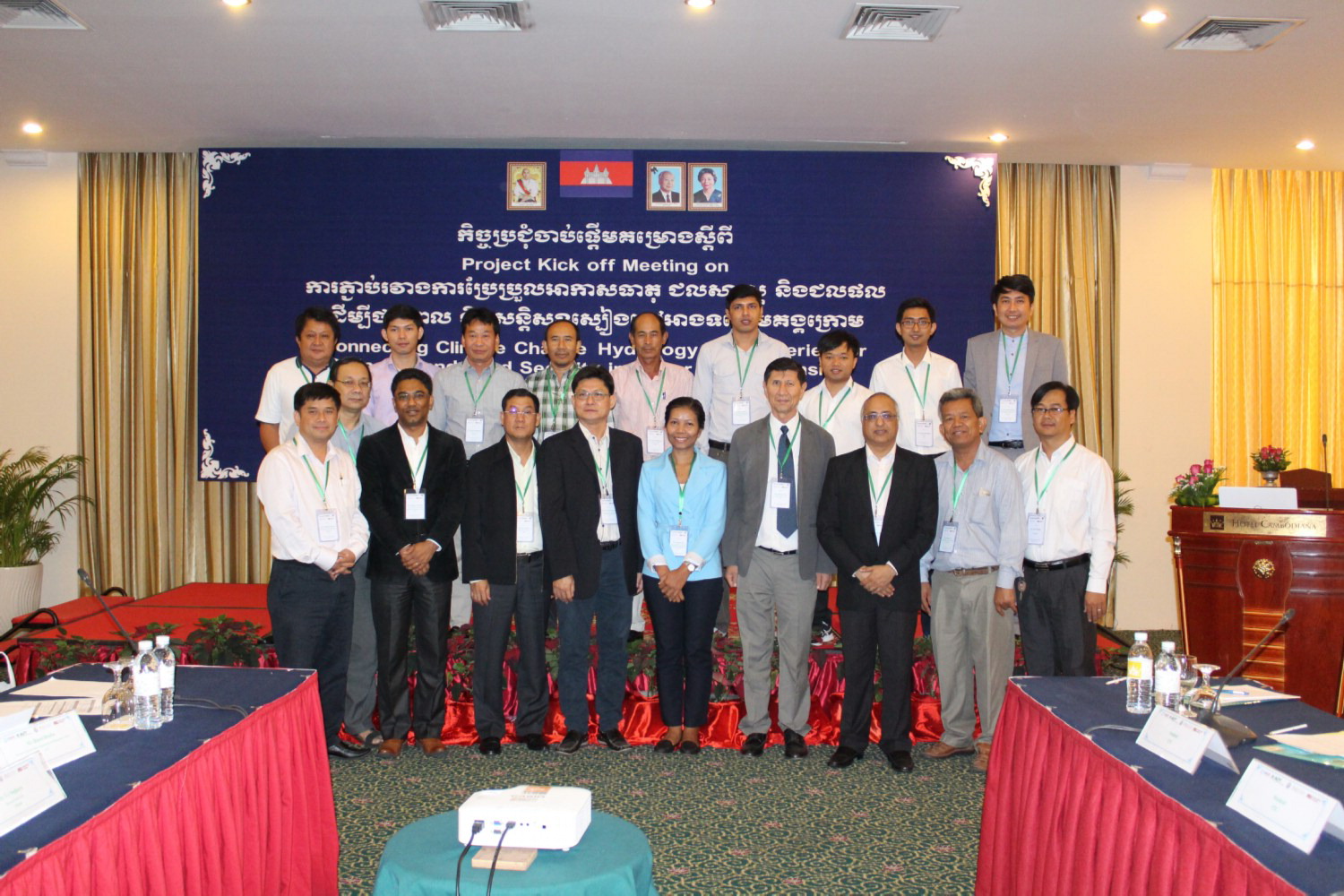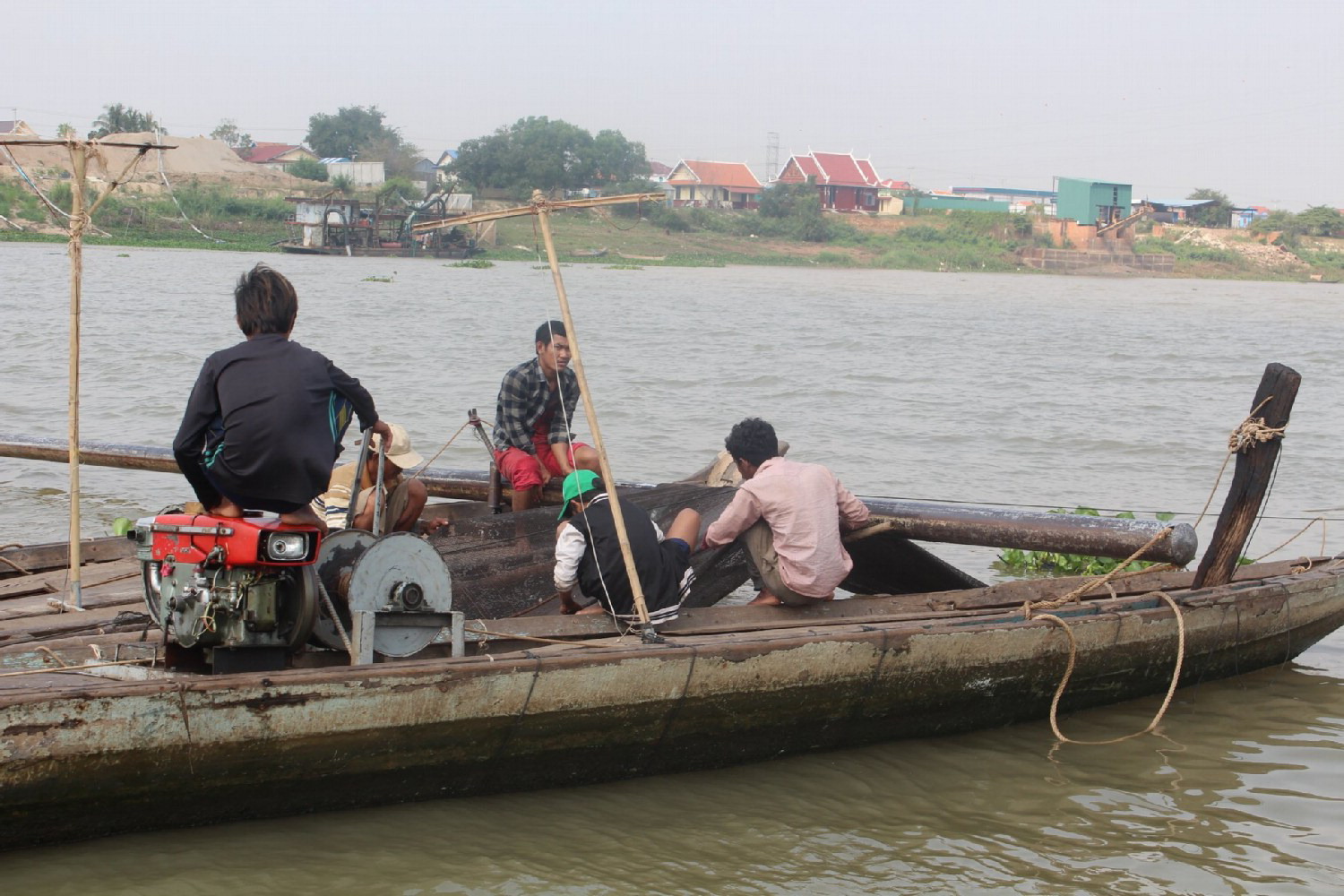Summary of Recent ActivitiesThis project was completed after several no-cost extensions on April 30, 2023. The PI Dr. Nitivattananon and co-PI Dr. Shrestha summarize the outputs and impacts of the work packages (WP) included in the project as follows:
WP1: Develop high resolution climate change scenarios. This work package has been completed. The team quantified climate change projections (temperature and precipitation) from five regional climate models (ACCESS, CNRM, MPI, NorESM, and REMO2009) under two emission scenarios for three-time horizons, viz. 2020s (2010 – 2039), 2050s (2040 – 2069), and 2080s (2070 – 2099) in comparison with the baseline period (1981-2005). They also prepared spatial analysis maps showing the differential impacts of projected temperature and rainfall changes in various parts of the Mekong Basin. Impacts of these outputs include soft evidence of utilization of the project data as a reference for other studies.
WP2: Assess the climate change impacts on river flows, inflow to the dams, and fish production. Development, calibration, and validation of the hydrological (SWAT), reservoir system simulation (HEC-ResSim), and fish-flow models: Apart from the work progress previously reported under the same heading, the researchers have developed and calibrated a Soil and Water Assessment Tool (SWAT) model for the Srepok tributary for the period 1997−2001. Because the model performance was found to be satisfactory, the team used the SWAT hydrological model to simulate the flow at the fish monitoring station in the baseline period and ultimately to develop the fish-flow relationship. Thereafter, they developed an HEC-ResSim (Hydrologic Engineering Center’s Reservoir System Simulation software) model for the Srepok Basin, including five dams (Buon Tua Srah, Buon Kuop, Dray Hinh 1 and 2, Srepok 3, and Srepok 4) in the main tributary. In addition to applying the models to fishery impacts, the researchers also used SWAT and HEC-ResSim to assess climate change impacts on future hydrology and hydropower generation using future climate data of five Regional Climate Models (RCMs) under two emission scenarios. The team notes that the project has pioneered the integrated impact of climate change and reservoir operation in the LMB region, and they have received requests for research articles for further environmental impact assessment in the region.
WP3: Optimize hydropower production and fish catch under climate change and dam operation scenarios. In order to integrate the hydrological and reservoir simulations and fish production model, the researchers fed the simulated discharge from the HEC-ResSim model at the Srepok 4 dam into the hydropower simulation model as an input for optimization. Thus, the obtained discharge from the optimization model at the Srepok 4 dam is added with the difference in discharge at Srepok 4 and the fish monitoring station (i.e., simulated from the SWAT model), which is provided as input to the optimization model developed at the fish monitoring station. The optimization was carried out for the baseline period between 2010–2014, while the projection was made for the near (2020–2049) and mid future (2050–2079). These outputs do not have a ground impact but rather serve as a medium for further assessment.
WP4: Build capacity and knowledge sharing. The team was particularly productive on this work package. They trained around 40 young professionals from departments of water resources, hydropower operations, and departments of fisheries from LMB nations (Thailand, Laos, Cambodia, Vietnam) on climate change downscaling, hydrological modelling, and time series analysis of hydroclimate and fisheries, as well as hydrological modelling and reservoir simulation. Although the project has ended, the team remains in touch with the trainees, who are applying the skills learned from the training program in their respective departments. For example, the PEER researchers regularly respond to queries related to SWAT model development and calibration in SWAT-CUP, as well as questions regarding climate projections and downscaling. Meanwhile, to promote dissemination of the team’s findings, project results, news, and blog posts are shared on the project website at https://connectmekong.com/. As of July 2023, the team had also produced five peer-reviewed publications and a Master's thesis (see citations below).
Dr. Nitivattananon, Dr. Shrestha, Dr. Piman, and their colleagues plan to continue their research on topics related to the Water-Energy-Food Nexus in the context of climate change in the Mekong Region. In particular, they hope to develop reservoir operating rules to optimize hydropower generation and fish production in the selected sub-basins of the Mekong Region. Thanks to seven new research grants totaling more than $10 million, they are well positioned to build on the foundation of their PEER research.
In MemoriamOn November 9, 2022, PEER staff received the sad news that co-PI
Dr. Chheng Phen of the Cambodian Inland Fisheries Research and Development Institute (IFReDI) had passed away in Thailand. Dr. Phen was a much valued and beloved member not only of this project team but also of the teams that carried out two other PEER projects (6-435 and 3-100). Colleagues noted his kindness, humility, good humor, and willingness to share his exceptional knowledge of Mekong fisheries. He was an outstanding teacher and mentor to his students, an irreplaceable expert and leader in his field, and a treasured friend who will be greatly missed by his many colleagues and associates worldwide. PEER offers its deepest condolences to his family and friends.
PublicationsS. Ghimire, S. Shrestha, P. Hok, S. Heng, V. Nitivattananon, and J. Sabo. 2023. Integrated assessment of climate change and reservoir operation on flow-regime and fisheries of the Sekong river basin in Lao PDR and Cambodia.
Environmental Research, 220(2023), 115087.
https://doi.org/10.1016/j.envres.2022.115087P. Pradhan, T.T.H. Pham, S. Shrestha, H.H. Loc, and E. Park. 2022. Projecting the impact of human activities and climate change on water resources in the transboundary Sre Pok River Basin.
Climatic Change, 172(3–4).
https://doi.org/10.1007/s10584-022-03367-2 K.E. Adikari, S. Shrestha, D.T. Ratnayake, A. Budhathoki, S. Mohanasundaram, and M.N. Dailey. 2021. Evaluation of artificial intelligence models for flood and drought forecasting in arid and tropical regions.
Environmental Modelling and Software, 144, 105136.
https://doi.org/10.1016/j.envsoft.2021.105136 S.K. Gunawardana, S. Shrestha, S. Mohanasundaram, K.R. Salin, and T. Piman. 2021. Multiple drivers of hydrological alteration in the transboundary Srepok River Basin of the Lower Mekong Region.
Journal of Environmental Management, 278(P1), 111524.
https://doi.org/10.1016/j.jenvman.2020.111524P. Pradhan, T. Tingsanchali, and S. Shrestha. 2020. Evaluation of Soil and Water Assessment Tool and Artificial Neural Network models for hydrologic simulation in different climatic regions of Asia.
Science of the Total Environment, 701, 134308.
https://doi.org/10.1016/j.scitotenv.2019.134308K.E. Adikari, S. Shrestha, M.N. Dailey, and S. Mohanasundaram. 2020. Evaluating artificial intelligence models for flood and drought forecasting in tropical and arid climatic regions [Master’s thesis, Asian Institute of Technology].
http://203.159.12.58/ait-thesis/detail.php?id=B06698
Back to PEER Cycle 6 Grant Recipients 




